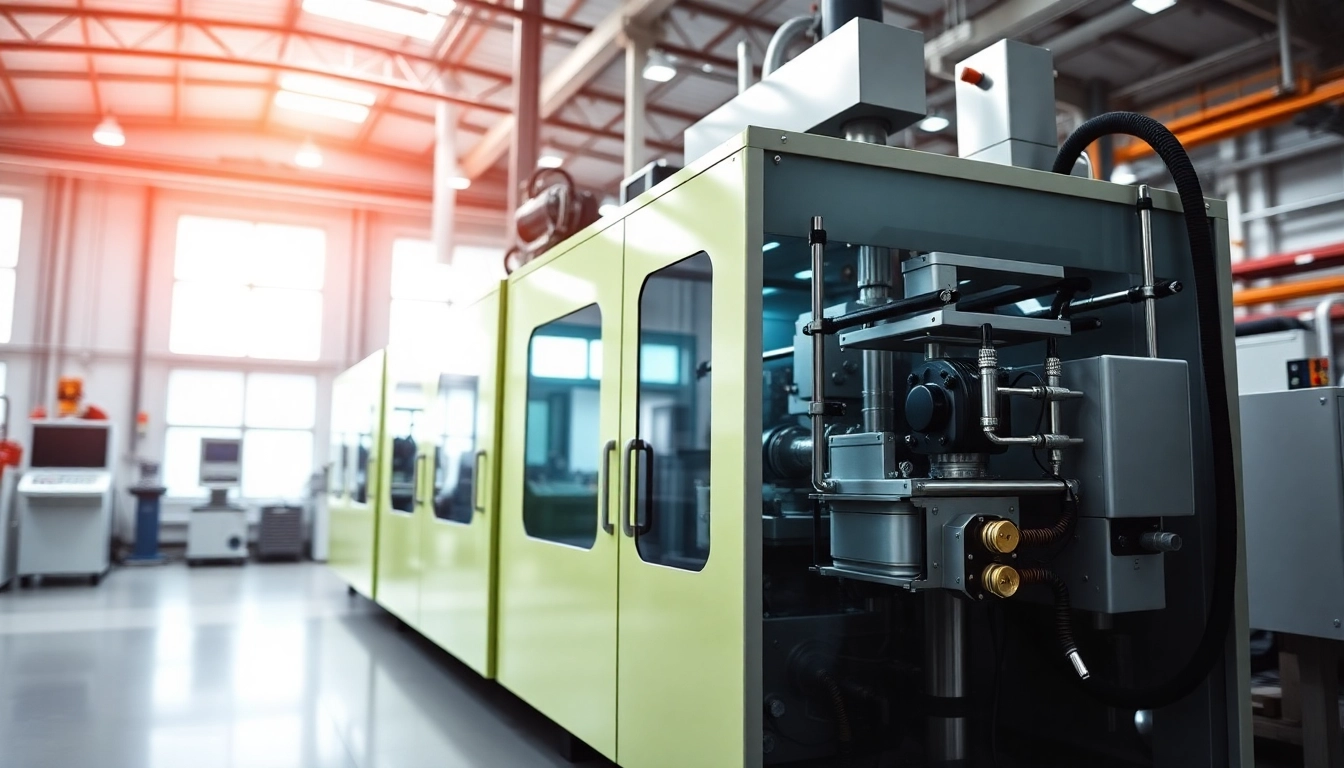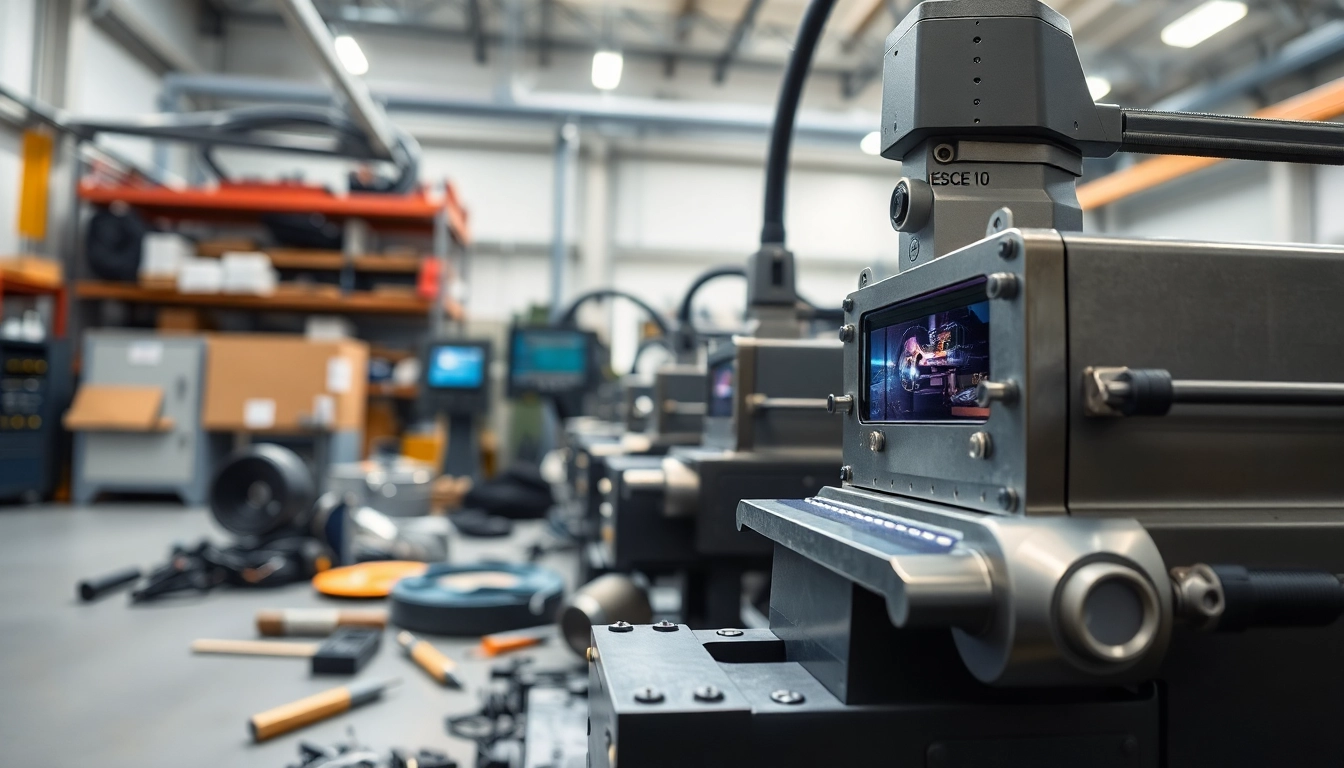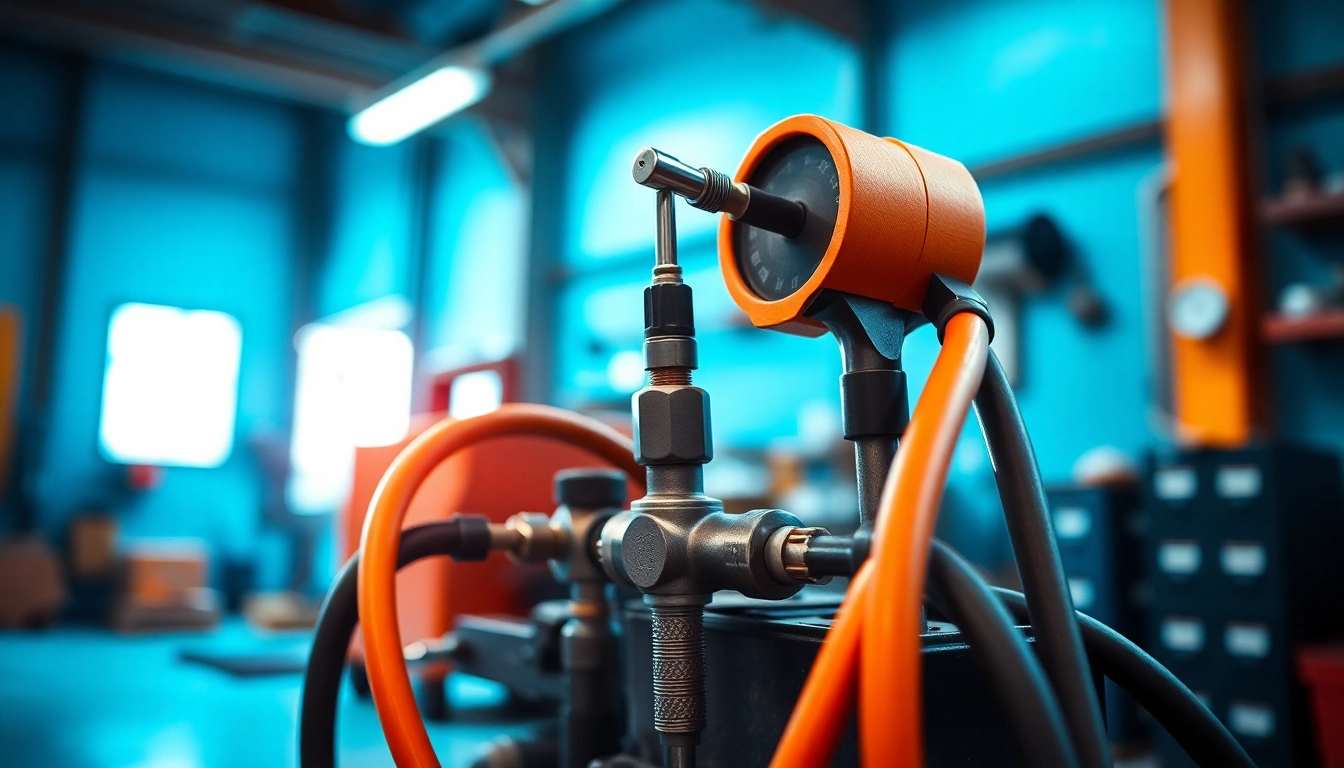Understanding Blow Molding Technology
What is Blow Molding?
Blow molding is a manufacturing process used to produce hollow plastic parts. The method involves inflating a heated plastic tube (known as a parison) into a mold using compressed air. This technique is versatile and widely utilized in the production of various products, including bottles, containers, and automotive parts. The blow molding technology allows for efficient mass production and can be adapted to create complex shapes while maintaining thin walls, which is essential for industries requiring lightweight components.
Types of Blow Molding Processes
There are three primary types of blow molding processes: extrusion blow molding, injection blow molding, and stretch blow molding.
- Extrusion Blow Molding: This method involves extruding the parison vertically into a mold, where air is blown in to expand it into the desired shape. It is best for producing large, hollow parts and is often used in the packaging industry.
- Injection Blow Molding: In this process, the parison is formed by injection molding. The preform is then transferred to a blow mold where it is inflated. This technique is known for its precision and is commonly used for manufacturing small containers with consistent wall thickness.
- Stretch Blow Molding: This process combines stretch and blow molding techniques to create products with enhanced mechanical properties. It is particularly used for producing PET bottles, known for their strength and clarity.
Applications of Blow Molding Machines
Blow molding machines cater to a myriad of industries. The following are some of the key sectors where this technology is pivotal:
- Packaging Industry: Blow molding is extensively used in producing bottles, jars, and containers for beverages, personal care products, and household chemicals.
- Automotive Industry: This technology aids in manufacturing lightweight components, such as fuel tanks and bumpers, contributing to fuel efficiency and overall vehicle performance.
- Consumer Goods: Products like toys, sport balls, and furniture components are frequently manufactured using blow molding, allowing for intricate designs while keeping costs down.
- Healthcare: Medical devices and packaging for pharmaceuticals often employ blow molding to ensure safety, sterility, and efficiency in production.
Choosing the Right Blow Molding Machine Supplier
Key Factors to Consider
Selecting the right blow molding machine supplier is crucial for ensuring efficient production and high-quality output. When searching for a Blow Molding Machine Supplier, consider the following factors:
- Reputation: Research the supplier’s track record, customer reviews, and case studies. A good reputation often reflects reliable products and excellent customer service.
- Technology and Innovation: Evaluate the technological advancements offered by the supplier. Suppliers that invest in R&D tend to provide cutting-edge solutions that can enhance production efficiency.
- Customization Capabilities: The ability to tailor machines to specific production needs is vital. Suppliers should offer customization options that align with your unique business requirements.
- Cost Considerations: Evaluate the total cost of ownership, including initial purchase price, maintenance costs, and the expected lifespan of the machine. A cheaper upfront cost may lead to higher long-term expenses.
Evaluating Supplier Credentials
When assessing potential suppliers, consider their credentials and industry certifications. Look for industry certifications such as ISO, which indicates quality management systems, and UL certification for safety. Additional factors to investigate include:
- Experience and Expertise: Suppliers with years of experience in the industry often bring valuable insights and know-how.
- Workforce Training: Evaluate suppliers’ commitments to employee training and development, as a skilled workforce is essential for maintaining quality and efficiency.
- Technical Support: Post-purchase support is crucial. Assess the availability and quality of technical support services, including troubleshooting and maintenance assistance.
Customer Support and Service
Customer support can make or break a supplier relationship. Here are critical aspects to consider:
- Response Time: Suppliers should offer prompt assistance for any queries or issues that may arise during production.
- Service Agreements: Examine service contracts, including maintenance schedules, warranty agreements, and the availability of spare parts.
- Training and Support: A good supplier will provide training for operators and technicians to ensure they can operate and maintain the machinery effectively.
Industry Trends in Blow Molding
Technological Advancements
The blow molding industry is evolving rapidly, driven by technological innovations aimed at enhancing productivity and efficiency. Key advancements include:
- Automation: The integration of automated systems in blow molding processes improves accuracy and reduces labor costs.
- Energy Efficiency: Modern blow molding machines are designed to consume less energy, which is increasingly becoming a critical factor in manufacturing.
- Smart Manufacturing: Industry 4.0 technologies, including IoT and data analytics, are enhancing machine monitoring, predictive maintenance, and supply chain efficiencies.
Sustainability Practices
As environmental concerns rise, the blow molding industry is shifting towards more sustainable practices. Some prominent trends include:
- Recyclable Materials: Manufacturers are increasingly using recyclable plastics in production, contributing to a circular economy.
- Reducing Waste: Innovative designs are minimizing material use, leading to less waste and better sustainability.
- Eco-Friendly Processes: Many suppliers are adopting greener production practices, such as reducing energy consumption and lowering emissions.
Market Demand Insights
The blow molding market is witnessing significant demand due to various factors:
- Rising Packaging Needs: The global demand for packaged goods continues to rise, driving the need for reliable blow molding solutions.
- Increased Consumption of Consumer Goods: As consumer goods sales grow, the demand for efficient blow molding processes will increase accordingly.
- Emerging Markets: Regions such as Asia-Pacific are rapidly industrializing, leading to a surge in manufacturing activities that require blow molding technology.
Cost Considerations for Blow Molding Machines
Initial Investment Estimates
The initial costs of purchasing blow molding machines can vary significantly based on the technology and complexity of the machinery. Generally, consider the following:
- Machine Cost: Prices for blow molding machines range from thousands to millions of dollars depending on specifications, capabilities, and brands.
- Installation Costs: Installation typically requires skilled labor, which can add to initial expenses.
- Utility Requirements: Understanding the energy and water requirements for operating the machine is essential for budgeting.
Long-term Operational Costs
Beyond the initial investment, long-term operational costs should also be factored in:
- Maintenance: Regular maintenance and service contracts can incur ongoing costs.
- Labor Costs: As automation increases, labor costs may decrease; however, retraining and upskilling staff can also incur expenses.
- Material Costs: The choice of materials significantly impacts costs. Sustainable materials may have a different price structure but can save money in the long run.
Value vs. Price: Making Informed Choices
While it may be tempting to choose the cheapest option, it is critical to evaluate value over price. The right choice should consider:
- Quality of Equipment: Higher-quality equipment may lead to lower long-term costs through increased durability and efficiency.
- Supplier Reputation: Partnering with a reputable supplier can often mean better after-sales support and equipment reliability.
- Total Cost of Ownership: This encompasses all costs associated with owning and operating the machinery, including initial and ongoing expenses.
Case Studies: Successful Blow Molding Implementations
Innovative Products Made with Blow Molding
Blow molding technology has been pivotal in creating innovative products across various sectors. For example, a notable case involves a manufacturer that developed a new line of lightweight automotive parts. Using blow molding, they produced bumpers that significantly reduced vehicle weight, improving fuel efficiency without sacrificing safety.
Client Success Stories
One of the world’s leading beverage companies partnered with a blow molding supplier to revolutionize their packaging process. By implementing advanced stretch blow molding technology, they not only enhanced the durability of their containers but also reduced production costs by 30% while increasing output volume.
Lessons Learned and Best Practices
Across various deployments, several best practices have emerged:
- Invest in Technology: Staying updated with the latest advancements can improve efficiency.
- Focus on Quality Control: Implement rigorous quality control processes to minimize defects and waste.
- Build Relationships: Establishing strong relationships with suppliers can lead to improved support and resources.



